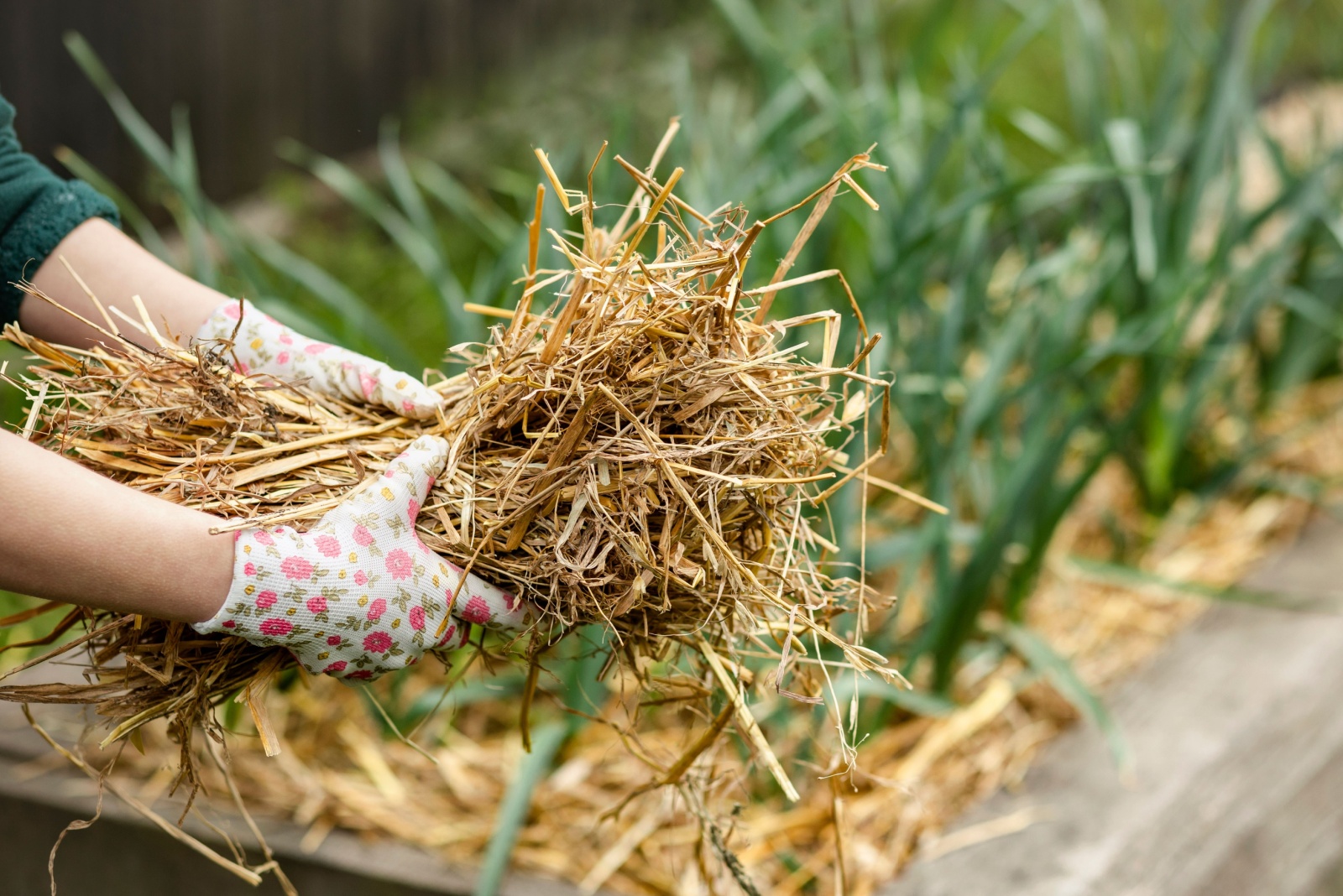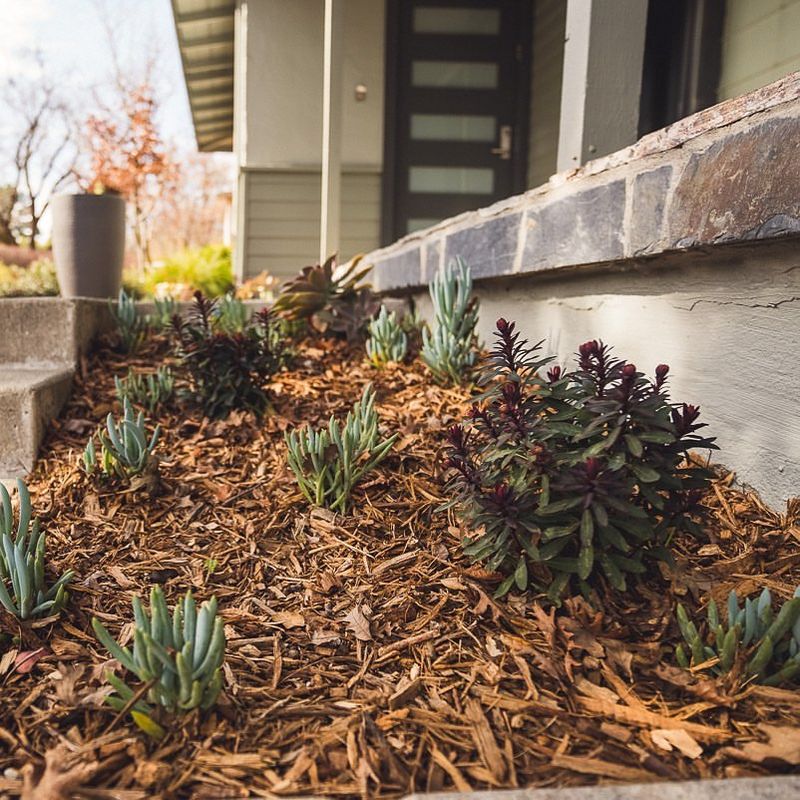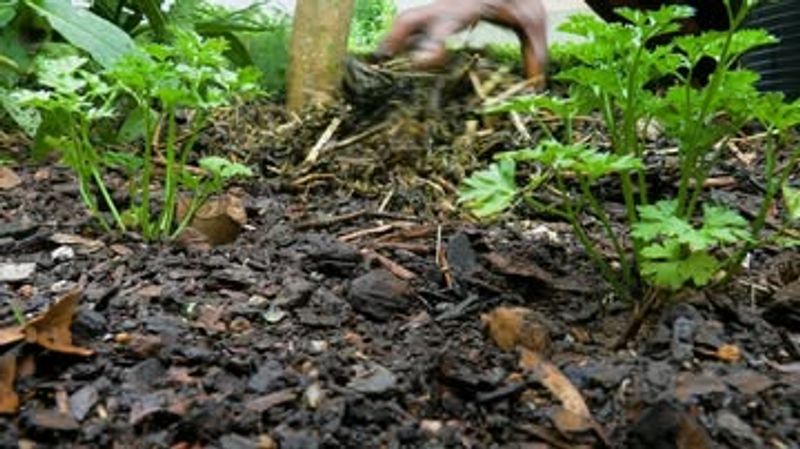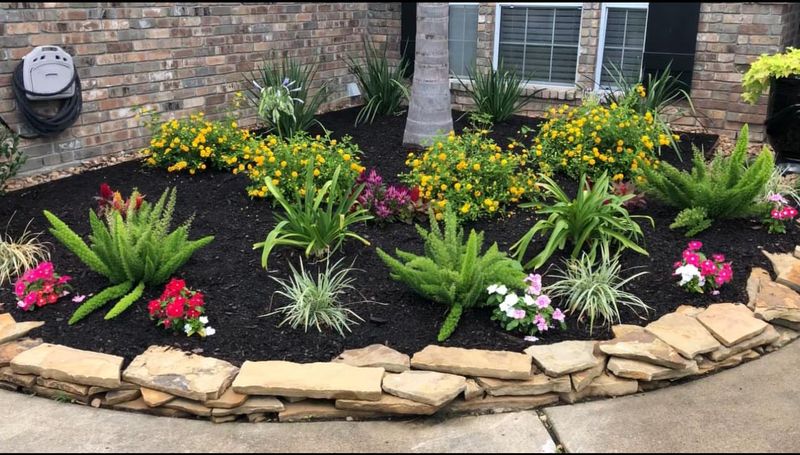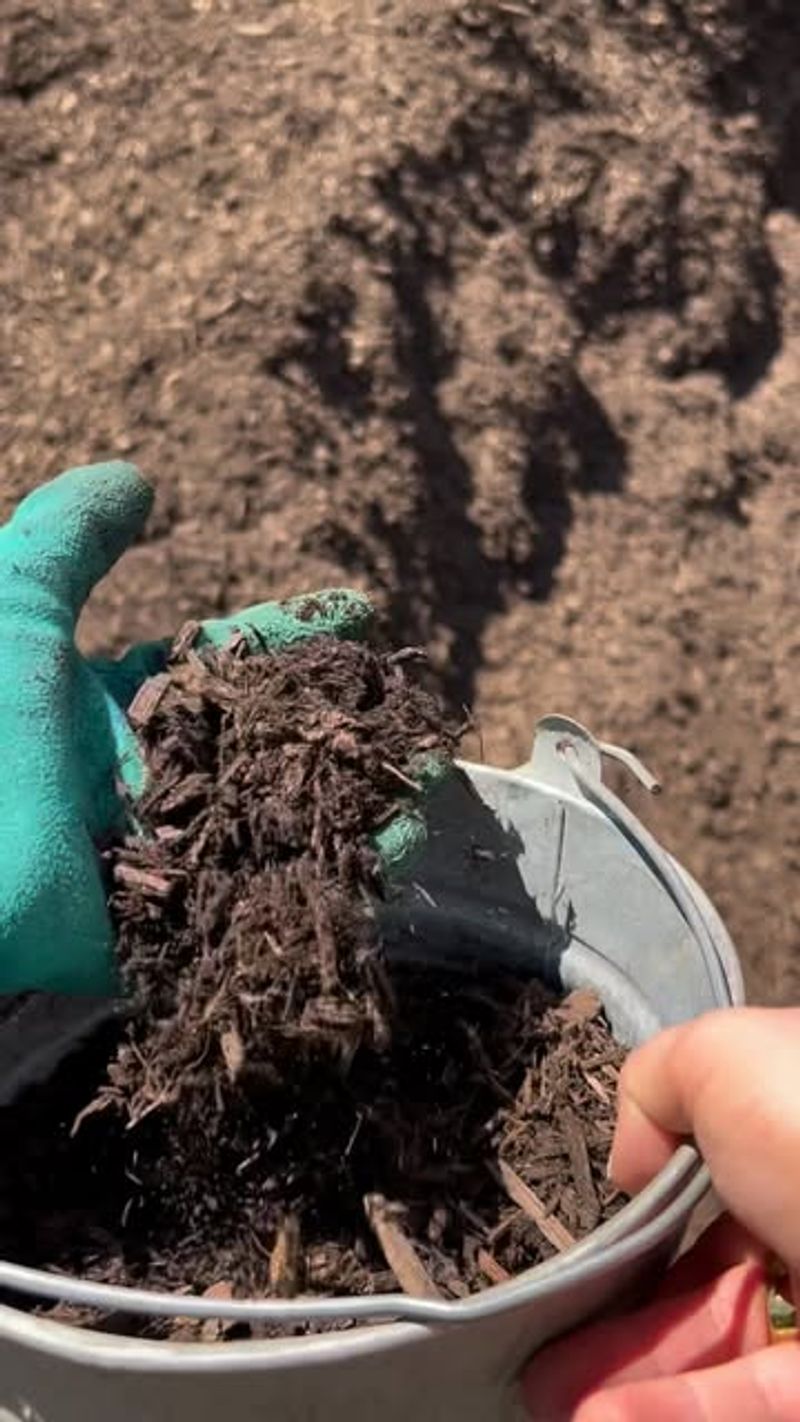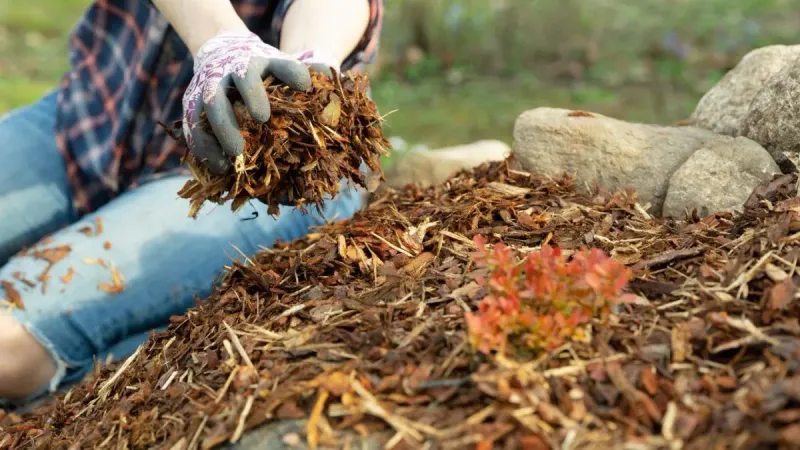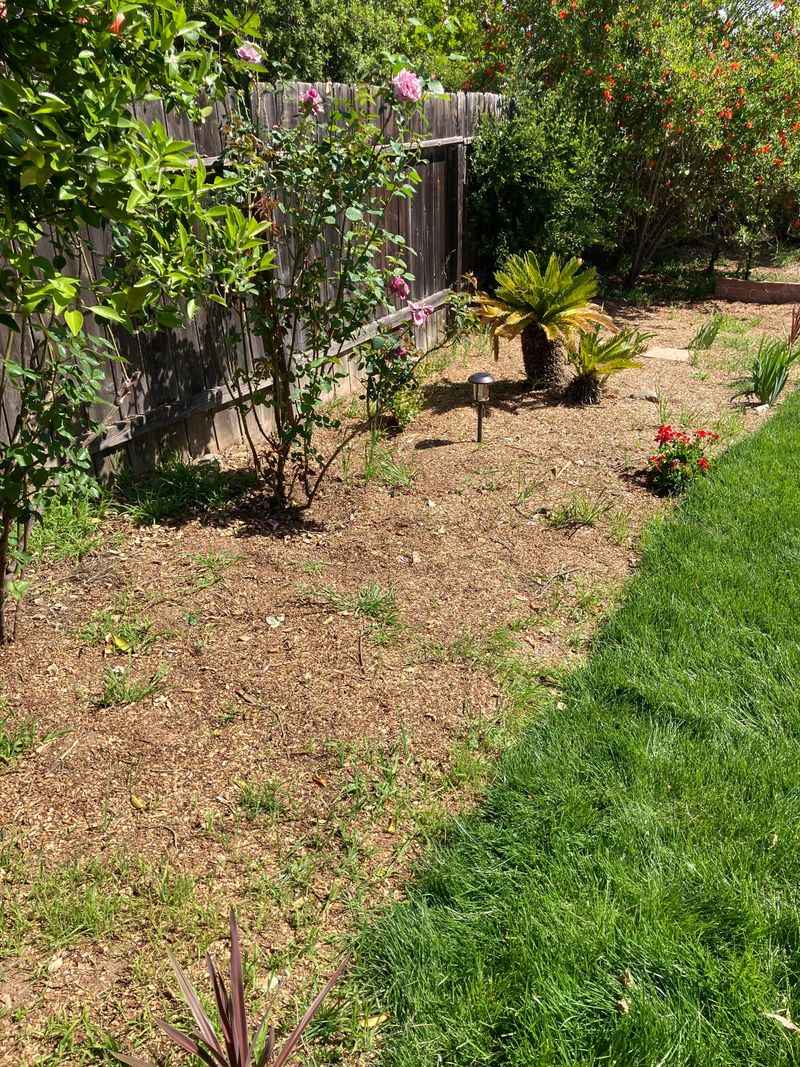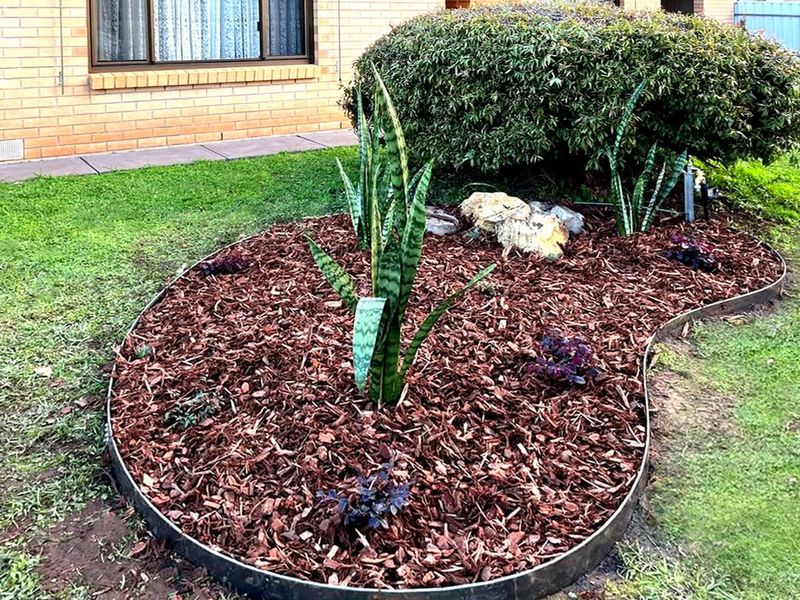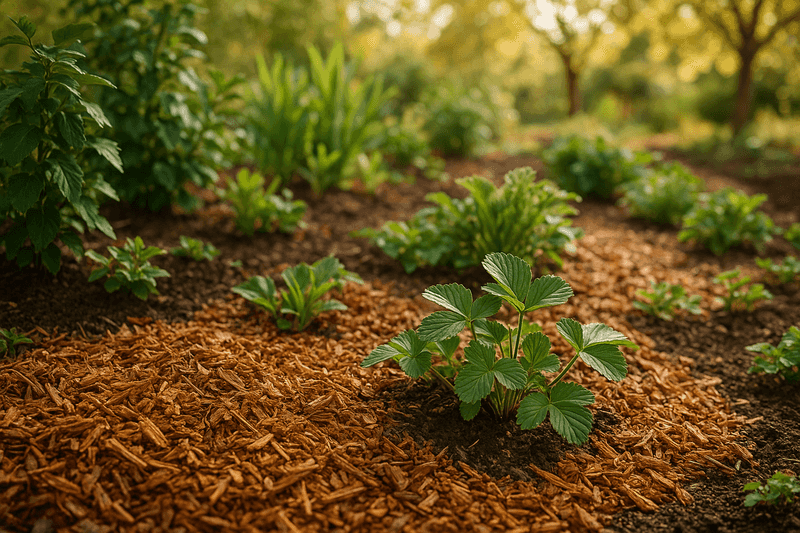Mulch is one of your garden’s best allies. It locks in moisture, keeps weeds at bay, and gives your beds a clean, finished look.
But timing matters—especially in a place like Missouri, where seasons can flip from hot to cold or dry to stormy in short order. Refreshing mulch at the right moment helps gardens here ride out those swings and stay healthy year-round.
1. After The First Hard Frost In Fall
Once temperatures drop and the ground starts to freeze, your plants enter a resting phase. In Missouri, where winters can turn cold quickly, adding mulch at this point protects roots from harsh winter winds and temperature swings that can push plants right out of the soil.
A fresh layer now acts like a cozy blanket, keeping everything stable until spring arrives. Aim for about two to three inches to get the job done without smothering your perennials.
2. When Spring Growth Begins To Show
As soon as you spot new shoots poking through the soil, it is time to refresh your mulch. Winter weather breaks down organic material, leaving beds thin and patchy by early spring.
For Missouri gardeners, this is usually around late March to early April, when warming days bring sudden bursts of new growth.
Topping off the mulch now helps lock in moisture as temperatures rise and gives young plants the protection they need. Pull back old mulch gently, check for any pests or rot, then spread a new layer around emerging growth for a healthy start.
3. Mid-Summer Heat Wave Hits
Scorching heat can dry out soil faster than you can water it. During Missouri’s mid-summer heat waves, if your mulch looks thin or the ground beneath feels hot and crusty, do not wait.
A second layer during a heat wave helps soil stay cool and moist, reducing stress on plant roots. Just be careful not to pile it too thick against stems, which can invite rot or pests. Keep it around two inches and spread evenly for best results.
4. Right Before Planting New Beds
Planning to add new flowers, shrubs, or vegetables? Lay down a second mulch layer before you plant to give your soil a head start.
Mulch helps suppress weeds that compete with new plants and keeps moisture levels steady during those critical first weeks. Spread it around the planting area, leaving space near the base of each plant. Your garden will establish faster and look polished from day one.
5. Following Heavy Rainfall Or Flooding
Big storms can wash away mulch or compact it into a dense, soggy mat. Once the water drains and the soil surface dries a bit, check your beds carefully.
If mulch has thinned out or shifted, add a fresh layer to restore coverage. Doing this prevents erosion, keeps roots protected, and stops weeds from taking advantage of bare spots. Wait a day or two after heavy rain so you are not working in mud.
6. When Weeds Start Breaking Through
Weeds are sneaky and will find any gap in your mulch to sprout up. If you notice more weeds than usual, your mulch layer has probably gotten too thin to block sunlight effectively.
Missouri gardeners often notice this after several weeks of humid weather, when fast-growing weeds take advantage of thin spots.
Adding another layer smothers weed seeds and makes it harder for them to reach the surface. Pull existing weeds first, then spread fresh mulch at least two inches deep. Your garden will stay cleaner with far less effort on your part.
7. Once Mulch Breaks Down Noticeably
Organic mulch like wood chips or shredded bark decomposes over time, feeding the soil but losing thickness. If your mulch looks flat, dark, or almost soil-like, it has done its job and needs refreshing.
Adding a new layer brings back the benefits of weed control and moisture retention. You do not need to remove the old mulch completely since it enriches the soil as it breaks down further.
8. Before Extended Dry Spells Or Droughts
Weather forecasts can give you a heads-up when dry conditions are coming. If you live in Missouri and know rain will be scarce for weeks, add mulch before the drought begins.
A thick layer reduces evaporation dramatically, meaning your plants can go longer between waterings. This is especially helpful if you travel or have water restrictions in your area. Spread it evenly and water lightly afterward to help it settle into place and do its job.

